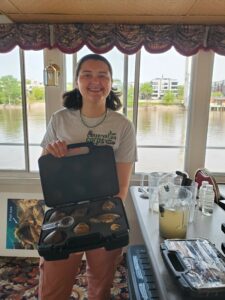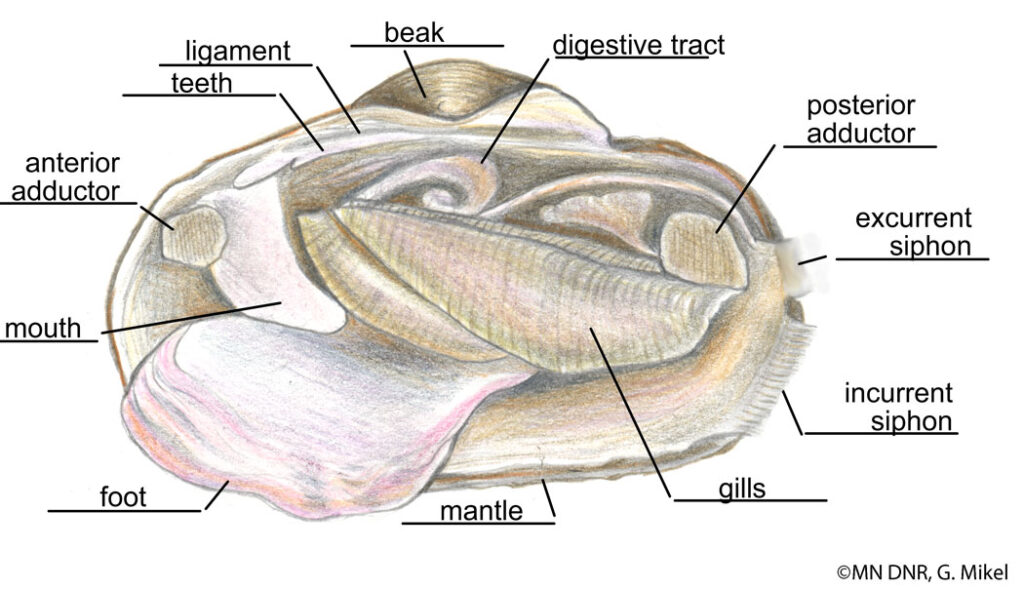Minnesota’s Mussels

By Clara Brown, Fort Snelling Visitor Services Specialist Individual Placement / AmeriCorps Member placed at Fort Snelling State Park, Minnesota Department of Natural Resources

Did you know that Minnesota is home to 51 species of native mussels? Before I started my term at Fort Snelling State Park, I had no idea that we had so many mussels in Minnesota or how important they are to our aquatic ecosystems.
Mussels are Mollusks which are a group of invertebrates with soft unsegmented bodies that live in aquatic or damp habitats. Other members of this group are marine mussels and clams, snails and even octopuses! Within this group mussels are part of a group of creatures called bivalves that have a two-part hinged shell. These shells protect bivalves from predation because their soft inner bodies are a prime source of food for many animals.


Freshwater mussels are filter feeders which means that they pull water into their bodies through an incurrent siphon, digest algae, phytoplankton, and bacteria, and then expel clean water through their excurrent siphon. This process removes particles from the water and helps keep the water clean. One mussel can filter up to 15 gallons of water a day. If the conditions are right, mussels will form dense concentrations called mussel beds. These beds can have thousands of individuals and many species all living in one place. These beds can work together to filter thousands of gallons of water a day, making a significant impact on the quality of the water.
Mussels are not very mobile animals so they generally stay in their beds for most of their lives. To prevent beds from becoming overcrowded mussels utilize fish to disperse their young. They do this by using a portion of their body to create a lure to attract fish. When the fish bite the lure the mussels release their young, called glochidia, into the fish’s mouth where they will attach to the gills and hitch a ride. They will stay attached to the fish for 14-30 days before releasing and finding a new home at the bottom of the river.


Unfortunately, due to pollution, sedimentation, dam construction, and the pearl button industry, about 65% of the 302 species of freshwater mussels that can be found in North America are in decline. In Minnesota, 28 of our 51 native mussel species are considered endangered, threatened, or of special concern, 5 species are extirpated which means that they are extinct from MN, and at least 2 more species are in danger of being extirpated.

Luckily, the MN DNR is working hard to prevent this decline. In August, several park staff and I had the opportunity to visit the MN DNR’s Center for Aquatic Mollusk Programs in Lake City Minnesota. At the center mussel biologists are working to restore historic mussel species in select rivers and streams by researching mussels, identifying host fish for more than twenty different species of mussels, and propagating and rearing seven species of threatened species in the lab. These efforts will hopefully be able to protect and support our native species and help keep our waters clean for year to come.

Resources: